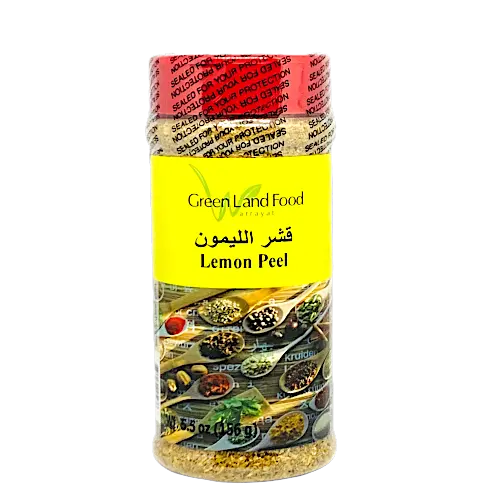Green Land Food, LLC
Lemon Peel
Lemon Peel
Couldn't load pickup availability
Product Description: Lemon Peel Grated - 7.5 oz
Add a burst of bright, citrusy flavor to your recipes with Lemon Peel Grated - 7.5 oz. Made from carefully dried and finely grated lemon peels, this zesty and aromatic seasoning is perfect for baking, marinades, spice blends, and savory dishes.
Unlike fresh lemons, this grated lemon peel offers long-lasting flavor without the need for refrigeration. Whether you're creating sweet desserts, tangy dressings, or flavorful spice rubs, this ingredient brings a natural citrusy kick to every bite.
Key Features of Lemon Peel Grated
Bright, tangy, and aromatic lemon flavor
Ideal for baking, spice blends, marinades, and dressings
Long shelf life—no refrigeration needed
Finely grated for easy mixing and seasoning
Packed in a 7.5 oz jar to maintain freshness and potency
Ingredients
100% Pure Grated Lemon Peel.
Serving Suggestions
Mix into cake and cookie batters for a refreshing citrus twist
Sprinkle over seafood, poultry, and roasted vegetables for extra zest
Blend into spice rubs and marinades to enhance meats and sauces
Stir into salad dressings and dips for a tangy burst of flavor
Use in herbal teas and beverages for a natural citrus infusion
Why Choose Our Lemon Peel Grated?
Our Lemon Peel Grated - 7.5 oz is sourced from premium-quality lemons, ensuring maximum freshness, bold flavor, and versatility. Whether you're a baker, chef, or home cook, this zesty seasoning is perfect for adding natural citrus flavor to any dish. Stock up today and bring the refreshing taste of lemon to your kitchen
Share


